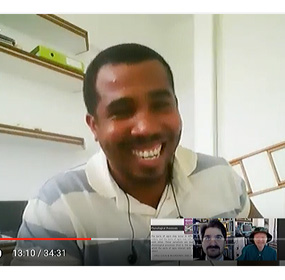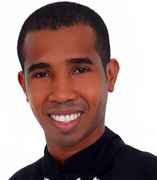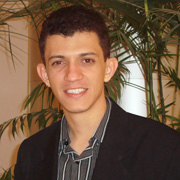 |
 |
 |
 |
 |
 |
|||||||||||||||||||||||||||||||||||||||||||||||||||||||||||||||||||||||
Webmaster:
Valerie Sutton |
||||||||||||||||||||||||||||||||||||||||||||||||||||||||||||||||||||||||||||
 SignWriting Symposium Home |
 SignWriting Symposium on YouTube |
Search by Authors |
| View 68 Presentation Web Pages including papers, slides, bios & videos. See below: |
 2014 Presentations |
| 2014 Presentation 1 SWORD Project Research Italy & France Bianchini & Borgia |
| 2014 Presentation 2 Wöhrmann's SpeechWriting Education, Germany Stefan Wöhrmann |
| 2014 Presentation 3 SW Handwriting Write SW by Hand Education, USA Adam Frost |
| 2014 Presentation 4 SWift Digital Editor, Software, Italy & France Borgia, Bianchini & Marsico |
| 2014 Presentation 5 Deaf Child Literacy Research, Brazil Marianne Stumpf |
| 2014 Presentation 6 Deaf Literacy with SignWriting Education, Paraguay Mirta Barreto |
| 2014 Presentation 7 New Testament in Written ASL Literature, USA Nancy Romero |
| 2014 Presentation 8 Writing 48 Articles in ASL Wikipedia Literature, USA Nancy Romero |
| 2014 Presentation 9 A Decade of Teaching ASL using SignWriting Education, USA Natasha Westland |
| 2014 Presentation 10 Ordering Signs in Dictionaries Education, USA Charles Butler Neto |
| 2014 Presentation 11 SignPuddle Standard Software, USA Steve Slevinski |
| 2014 Presentation 12 DELEGS-Editor in Classroom Education, Germany Stefan Wöhrmann |
| 2014 Presentation 13 SignWriter Studio Software, Honduras Jonathan Duncan |
| 2014 Presentation 14 Alternative ISWA 2010 Fonts Software, Honduras Jonathan Duncan |
| 2014 Presentation 15 SignWriting in Deaf Education, Tunisia Balti, Bahri & Laajili |
| 2014 Presentation 16 Deaf Communication Education, Brazil Faulstich, Júnior & Patrícia Santos |
| 2014 Presentation 17 SignWriting Teachers Education, Brazil Barreto, Souza, Nascimento & Coelho |
| 2014 Presentation 18 Deaf Perspectives Education, Brazil Barreto, Souza, Nascimento & Coelho |
2014 |
| 2014 Presentation 20 Sign Animating Education, Canada André Lemyre |
| 2014 Presentation 21 SignWriting App Software, USA Jake Chasan |
| 2014 Presentation 22 Children's Books Literature, Portugal Rafa Cota Silva |
| 2014 Presentation 23 TuniSigner Avatar Software, Tunisia Bouzid & Jemni |
| 2014 Presentation 24 Deaf Ed in Brazil Education, Brazil Stumpf & Barreto |
| 2014 Presentation 25 Reading SignWriting Education, Brazil Débora Wanderley |
| 2014 Presentation 26 SW Online Course Education, Brazil Barreto, Pereira & Barbosa |
| 2014 Presentation 27 Film Online Course Education, Brazil Barreto & Goulart |
| 2014 Presentation 28 Language Analysis Research USA Erika Hoffmann |
| 2014 Presentation 29 SW in Deaf Schools Education, USA Denny Voreck |
| 2014 Presentation 30 SignWriting App Education, USA Elena Eroshkin |
| 2014 Presentation 31 Digital SW Texts Software, USA Steve Slevinski |
| 2014 Presentation 32 SW & Phonology Research, Brazil Costa & Barreto |
| 2014 Presentation 33 SW-OGR Software, Italy Borgia & Marsico |
| 2014 Presentation 34 SignWriting in Catholic Liturgy Education, Slovenia Edi Strouhal |
| 2014 Presentation 35 Escrita de Sinais Education, Brazil Barreto & Barreto |
2014 |
| 2014 Presentation 37 SW Translation Research, Brazil Barreto & Oliveira |
| 2014 Presentation 38 SignWriting in Music Scores Literature, USA Ron Shalom |
| 2014 Presentation 39 Writing Maltese Sign Language Research, Malta Maria Galea |
| 2014 Presentation 40 40 Years Writing Sign Languages: 1974-2014 Research, USA Valerie Sutton |
 2015 Presentations |
| 2015 Presentation 41 Javascript Keyboard Software, Canada Yair Rand |
| 2015 Presentation 42 Teacher's Attitudes SW in Education Saudi Arabia AbuShaira, Mahfooz |
| 2015 Presentation 43 SignWriting Stack Software, USA Steve Slevinski |
| 2015 Presentation 44 DELEGS-Editor Education, Germany Stefan Wöhrmann |
| 2015 Presentation 45 SignWriting Electronic Flashcards Education, Canada André Lemyre |
| 2015 Presentation 46 Reading SignWriting Research, Brazil Marcos Klüber Kogut |
| 2015 Presentation 47 SignWriting in Classroom Education, Portugal Rafa Cota Silva |
| 2015 Presentation 48 SignWriting Journal System Software, Brazil Brito, Shintaku, Ramos & Nascimento |
| 2015 Presentation 49 SignMaker 2015 Software, USA Steve Slevinski |
| 2015 Presentation 50 Nicaraguan Sign Language Grammar Education,Nicaragua James Shepard-Kegl |
| 2015 Presentation 51 SignWriting Font Research, Germany Lentföhr, Nitschke & Rutrecht |
| 2015 Presentation 52 MemoSign Game Software, Tunisia Bouzid, Khenissi |
 2016 Presentations |
| 2016 Presentation 53 Home For Deaf Children Education, Peru Kristina Tworek |
| 2016 Presentation 54 SignTyp Database Research, USA Rachel Channon |
| 2016 Presentation 55 FSW Formal SignWriting Software, USA Steve Slevinski |
| 2016 Presentation 56 SignWriting in Tunisian Deaf Education, Tunisia Laajili & Balti |
| 2016 Presentation 57 Parallel Corpora Software, Brazil Alex M. Becker |
| 2016 Presentation 58 Deaf Writing Skills Education, Portugal Jorge Manuel Pinto |
| 2016 Presentation 59 Bilingual Deaf Education, Brazil Almeida & Júnior |
| 2016 Presentation 60 Bilingual Deaf Education, Brazil Daniele Bózoli |
| 2016 Presentation 61 SignWriting in Unicode Software, USA Steve Slevinski |
| 2016 Presentation 62 SignPuddle 3.0 Software, USA Steve Slevinski |
| 2016 Presentation 63 Peru Sign Dict Research, Peru Miguel Mondoñedo |
| 2016 Presentation 64 Sign Wikipedias Literature, USA Valerie Sutton ASL Presentation by Adam Frost, Jason Nesmith, Holly Sharer & the CODA Brothers Plus special video on Tunisian Sign Wikipedia by Mohamed Ali Balti |
 2017 Presentations |
| 2017 Presentation 65 SignÉcriture: A Decade of Writing French-Swiss Sign Language Education, French-Switzerland by Anne-Claude Prélaz Girod |
| 2017 Presentation 66 The Sutton SignWriting Standard of 2017 Software, USA by Steve Slevinski |
| 2017 Presentation 67 The Writing of Grammatical Non-Manual Expressions in Sentences in LIBRAS Using SignWriting Research, Brazil by Joao Paulo Ampessan |
| 2017 Presentation 68 Sign Language Writing: SignWriting as a Tool in Deaf Literacy Education, Brazil Fernando Carneiro Priscila Bartoletti |
| 2017 Presentation 69 SignWriting Presentations at the ICONIL in Bacabal,Brazil August 2017 by Adam Frost & Marianne Stumpf |
| 2017 Presentation 70 2 Brazilian TV Programs on SignWriting on TV INES, Brazil, 2017 |
| 2014 Live Streaming 40 Presentations  |
| 2015 Live Streaming 12 Presentations  |
| 2016 Live Streaming 12 Presentations  |


 Roberto César Reis da Costa
Roberto César Reis da Costa






























































